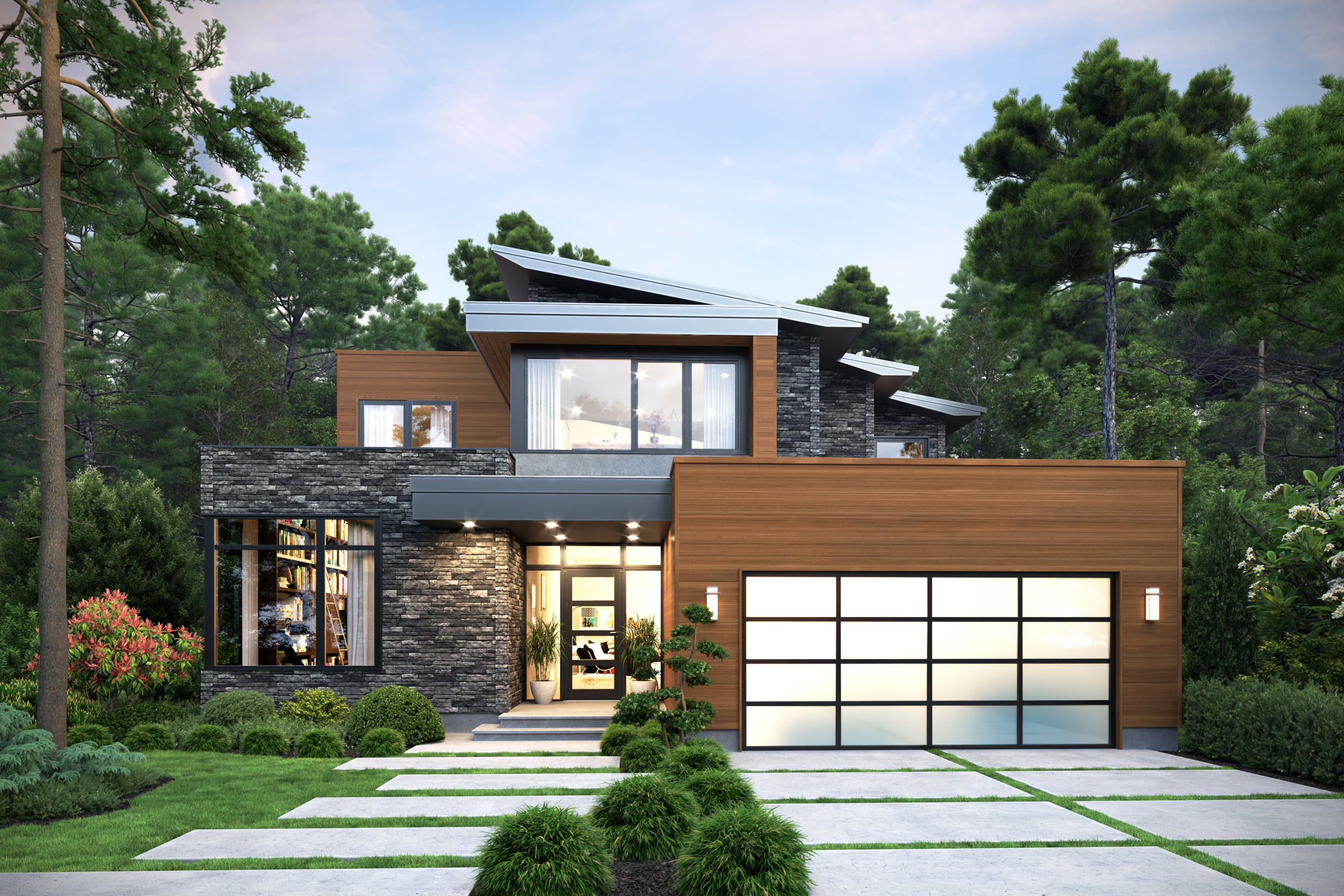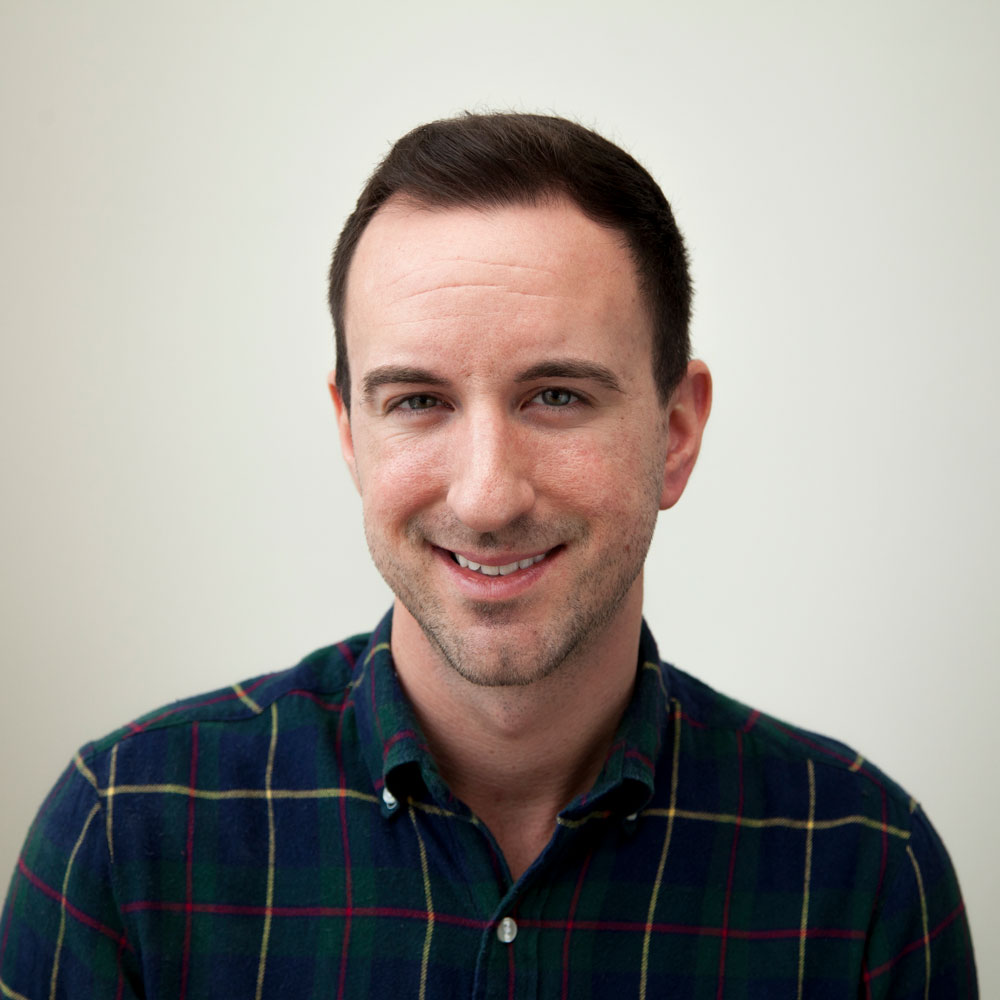Story at a glance:
- Bold, contrasting colors and a mixture of textures and materials top the list of today’s home siding design innovations.
- Architects and designers prefer to work with suppliers who can offer an enormous breadth of style options.
- Westlake Royal Building Products features an entire family of siding brands that provide architects with a one-stop solution for design needs.
Drive through any residential development today and you’ll be struck by the boldness of the colors and the diversity of materials that clad the exterior of new homes. This range of design opportunities extends to remodels as well, with homeowners swapping out beige 3-inch lap siding for more contemporary concepts that seamlessly blend a unique variety of textures and hues.
“Cookie-cutter home design no longer works for the market today,” says Steve Booz, vice president of marketing at Westlake Royal Building Products. “Designers and homeowners want to stand out from the pack and make a statement with their aesthetic choices. And the siding industry has really evolved to meet these needs.”
Westlake—which recently reorganized its corporate structure after a series of acquisitions—continues to expand its already robust product line to appeal to today’s more discerning customers. The firm is also investing in new technology aimed at boosting the durability and the life cycle of its portfolio so that scarce resources are not wasted.
Nobody wants their siding to warp, crack, or fade after a couple of years, Booz says. “We approach this not only from a sustainability standpoint, but also from an understanding that customers don’t want to be bothered with regular upkeep.”
Booz sat down with gb&d to discuss the evolution of design trends in the siding market and the surprising sustainability of vinyl siding.
What are architects, designers, and homeowners looking for today when it comes to exterior design?
Really a lot of it comes down to the basics of beauty, performance, and durability. Beauty is all about curb appeal and authenticity. Curb appeal is everything. Customers want to know how they can set their house apart from their neighbors. And when we talk about authenticity in this day and age, we’re talking about mimicking the look and feel of wood. Any product that can successfully achieve that authentic wood grain aesthetic is going to be hugely popular.
And with performance, it’s all about low maintenance. People are busy doing other things and don’t want to spend their weekends on a home maintenance project. And this goes back to the authenticity of vinyl, aluminum, cellular composite, or poly-ash siding. People don’t want to maintain wood, so these low maintenance materials are critical for bridging that gap.
This brings us to durability. Customers want a product that is going to last a lifetime. That’s why our siding products at Westlake are engineered with advanced materials that offer a wood-like aesthetic without the moisture absorption or maintenance issues associated with real wood products. When moisture penetrates materials like wood and then dries out, it can lead to cracking, warping, and mold growth. And customers just don’t have time to deal with those issues.
What are the biggest trends in exterior home design right now?
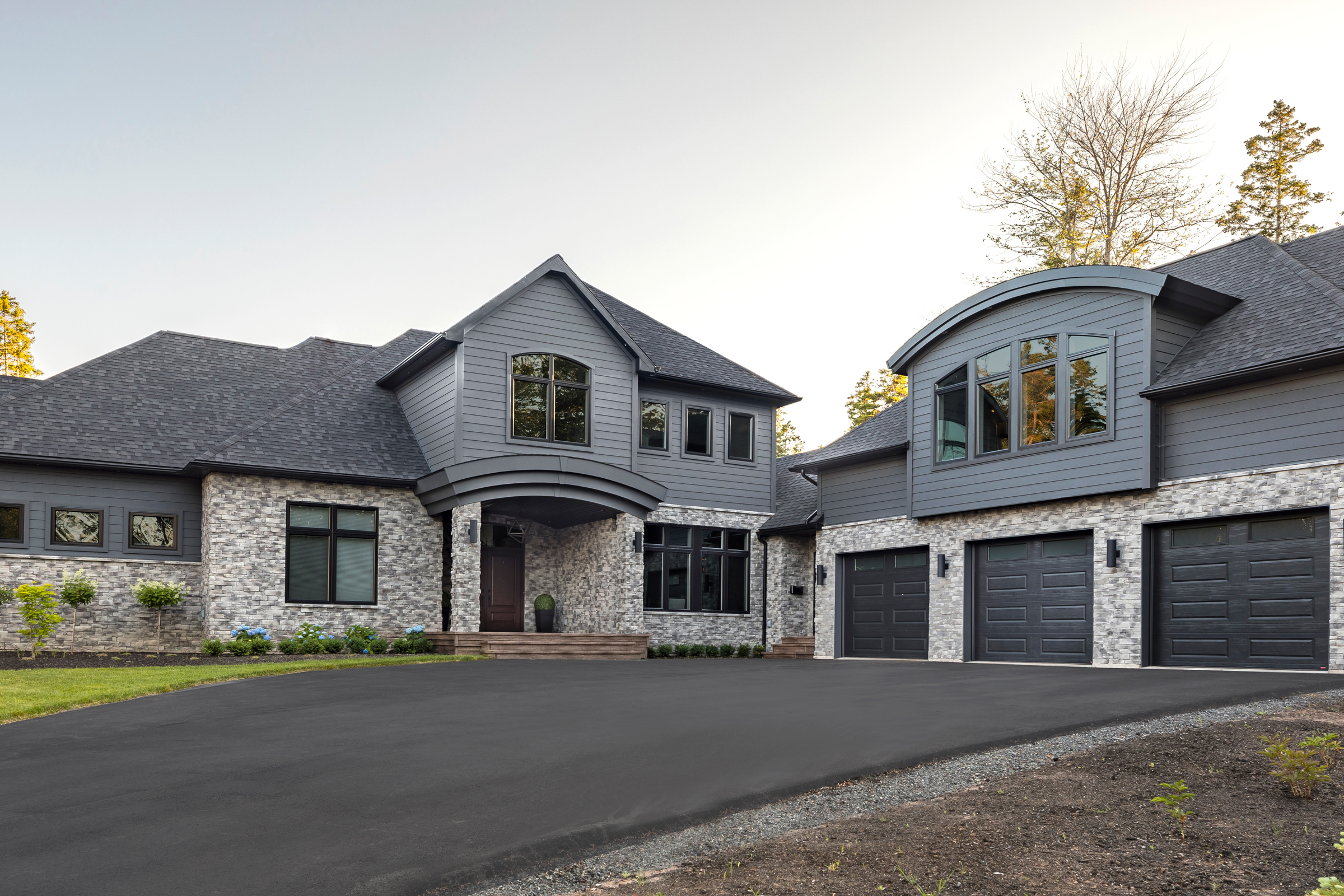
The Celect line of cellular composite siding comes in 5-inch and 7-inch smooth lap siding as well as clapboard, shake, and board and batten. Photo courtesy of Westlake Royal Building Products
I think it’s definitely that bolder look and mixing styles, such as mixed textures with contrasting colors. We’re seeing a lot of white siding with black trim, so it’s really about stark contrasts, bold accents, and mixing textures such as lap siding with a stone knee wall or board and batten with shake. These unique combinations really allow a home to stand out.
The challenge with blending styles and textures can be finding a suite of products that provides this diversity on one platform so the overall look of the home is cohesive. We recognized this pain point and developed our Celect line of cellular composite siding, which comes in 5-inch and 7-inch smooth lap siding as well as clapboard, shake, and board and batten.
This facilitates an enormous range of design opportunities, so customers can do anything from a traditional farmhouse look to a more sleek, modern design, as well as Southern coastal and Victorian—all within a single product line.
How have the design capabilities of siding products evolved over the past 20 years?
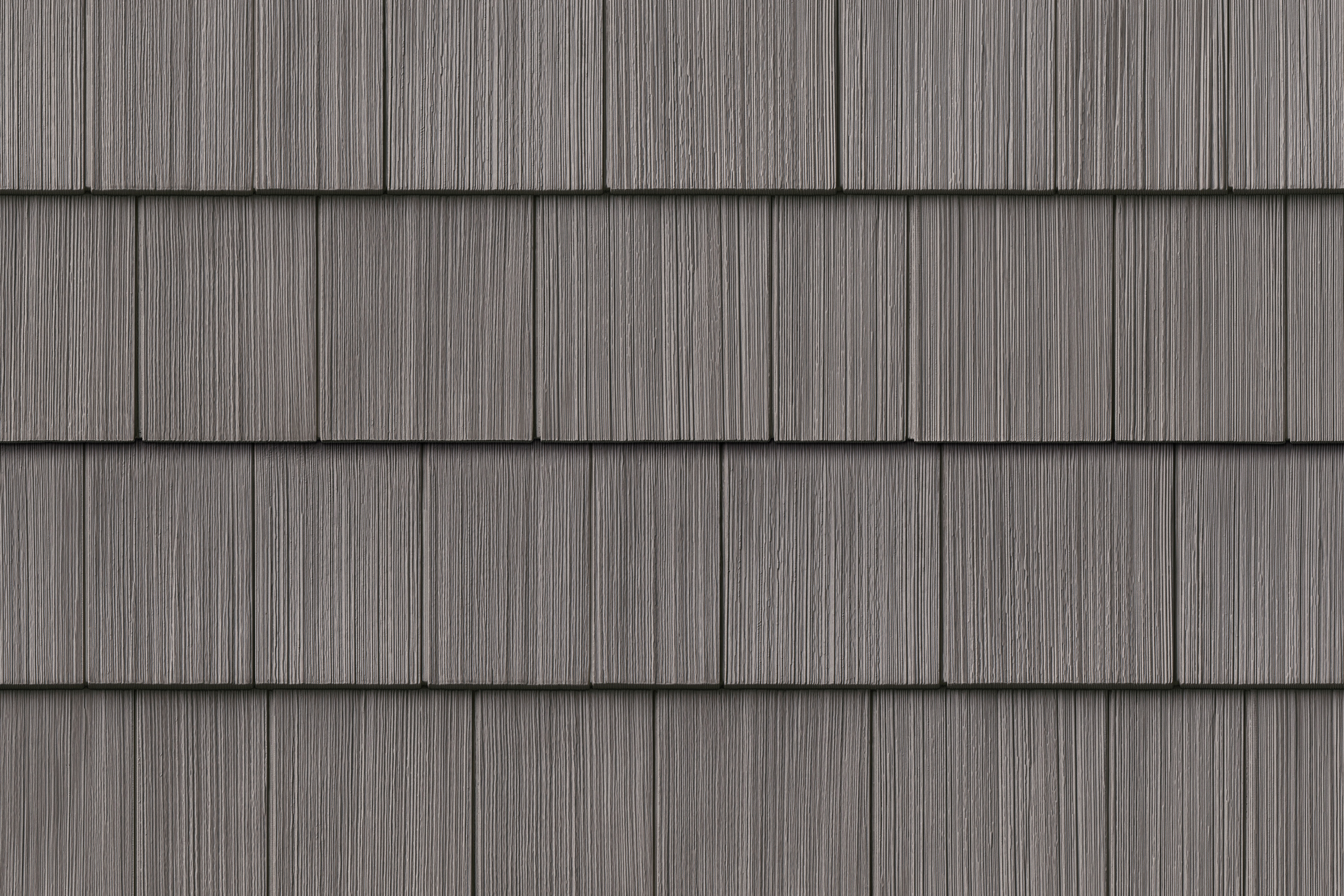
The Portsmouth line of shake and shingles is made from a unique process of injection molding. Photo courtesy of Westlake Royal Building Products
Today’s siding capabilities are a world away from where the industry was at during the last housing boom of the early 2000s. The market has access to such a diversity of styles, textures, and colors today because of the incredible innovations driven by the siding industry.
The authentic alternatives to wood are a great example of this. Our Portsmouth line of shake and shingles is made from a unique process of injection molding, which gives us the ability to have almost perfect detail. All of the molds are made from actual cedar shakes, and this picks up all the nuances of that shake to provide a look that’s indistinguishable from real wood.
There’s been a great leap in color technology in our industry over the past 20 years as well. Back then you couldn’t go that dark with siding and trim because it would absorb too much heat, which would warp the siding and fade the color quickly.
That’s why we developed our Chromatix technology, which acts as a sort of sunblock for your siding. Our investment in research and development has really paid off, and now you’re able to add all of these bold dark colors, like blues, greens, and grays, which gives us far more design options than before. We also offer our TruExterior poly-ash siding, which can be painted any color, including dark hues.
What should architects and designers consider before making a purchasing decision?
Environmental factors are one of the first considerations, because you’ve got to make sure you can withstand the elements you’re in. At Westlake, we invest a great deal in our internal testing facilities to make sure our final products meet all of the most stringent codes. All of our siding is approved by the Florida Building Code, which are the country’s strictest wind standards. And most of our brands carry a Class 1A Fire Rating, which means the product is self-extinguishing.
But at the end of the day, it’s all about what the customer wants. The biggest concern for architects and designers is being able to bring the customer’s vision to life and ensure the exterior cladding looks great and performs even better without making too many compromises.
That’s why design professionals need to partner with a supplier that has the breadth and depth of products, styles, and color palettes available. They need to be able to come to customers with a comprehensive set of products, all on the same platform. And with the supply chain issues we’re seeing today, having the product in-stock is critical. That’s part of the benefit for Westlake of being such a big family of brands and operating coast-to-coast—our scale means we always have what the customer needs.
What are the most environmentally friendly exterior cladding solutions?
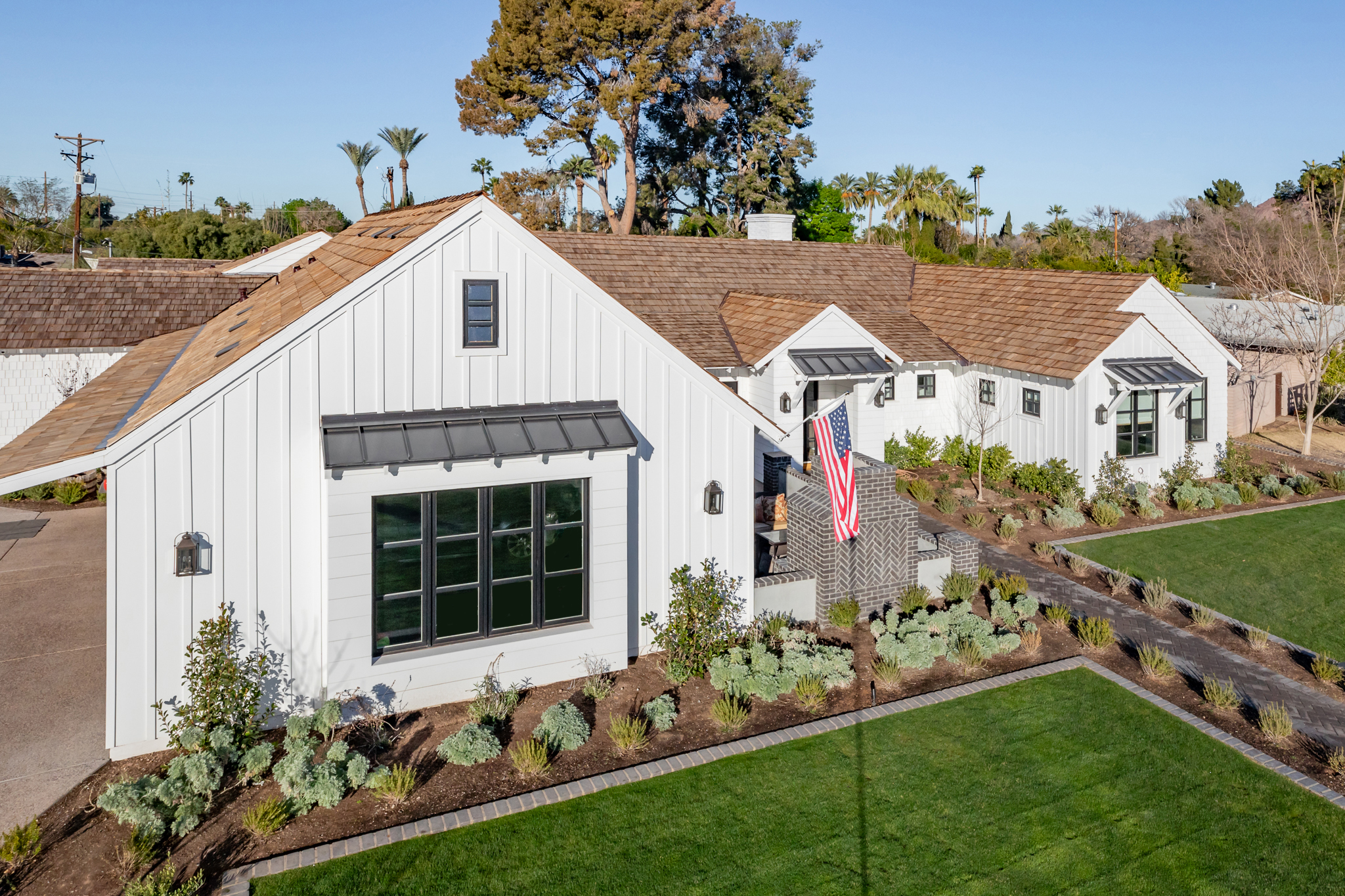
TruExterior poly-ash siding can be painted any color. Photo courtesy of Westlake Royal Building Products
It’s surprising to a lot of people, but vinyl siding is probably the most sustainable product from a complete life cycle perspective of any exterior cladding. The resources to manufacture it are lower, and certainly the longevity and the recyclability of the material make it one of the most full-circle sustainable solutions out there.
In addition, our TruExterior product line is made from 70% recycled content—specifically fly ash, which is a by-product recovered from coal combustion—combined with polymer for a high level of dimensional stability and durability.
This process keeps the material out of a landfill and on to somebody’s home. And because of its durability, it stays there for a long time; there’s no need to tear it off in 10 years and waste more resources. The longevity of the product is critical for reducing our reliance on virgin material.
Looking toward the future, where do you see the market moving in terms of design trends?
I think the desire for bold, rich colors will only continue to grow. With that you’re going to see a lot more contrasting colors than before, such as light siding with dark accents. And I think using mixed materials is here to stay. Customers love mixing siding with stone, or horizontal with vertical siding, adding shake accents–anything that breaks up the facade of the house and helps it stand out amongst the neighbors.
Resilience is probably the best word that wraps up everything you need from a weather or natural event standpoint. We seem to have more and more wildfires in the West, and more hailstorms in the South and Midwest, plus hurricanes along the gulf, so resilience is critical. Insurance companies are tired of replacing people’s products, and they’re starting to push for materials that will withstand these events that Mother Nature keeps throwing at us.

